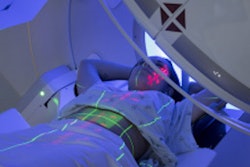
Dr. Reinhard Loose, PhD, professor and senior consultant at the Radiology Institute at the Nuremberg Nord Clinic, and Dr. Peter Wigge, a medicolegal lawyer, have compiled comprehensive information on obtaining consent for diagnostic x-ray investigations. In this interview, they explain why this is such an important topic and why radiology has a "special part" to play here.
What was it that prompted you to look at the legal aspects of obtaining consent?
 Dr. Reinhard Loose, PhD.
Dr. Reinhard Loose, PhD.Loose: Obtaining consent is an important part of the radiologist's work, as it is in every other field of medicine. However, the resources devoted to obtaining consent and the time that this takes need to be proportionate to the possible risks associated with a radiological investigation or an interventional procedure. There are also matters that need to be dealt with as part of the daily workload. Apart from one or two exceptions, diagnostics involving ionizing radiation tend to fall within areas of day-to-day medical practice that are associated with minimal risk.
Wigge: Under the new sections §§ 630a ff. of the BGB (German Civil Law Code) that govern the treatment contract, a law has been brought in governing patients' rights. However, these regulations did not clarify whether or not an ionizing radiation procedure is involved or what form this takes.
Under section 630e paragraph one BGB, doctors are obliged to inform patients of all essential facts required for consent. Under section 630d paragraph one BGB, this consent must be obtained before medical action is taken. The wording used in these texts could, initially, result in an unlimited range of activities requiring consent, with commensurate obligations. Previous case law has already shown up boundaries in this context.
As is the case for all medical practitioners, radiologists are obliged to inform their patients of possible risks related to diagnostics and treatment, along with possible sequelae. In what way does radiology stand out here?
Loose: In radiology, a distinction needs to be made between two types of risk. "Deterministic risks" is the expression used to describe possible damage immediately after an investigation or procedure or within a period of weeks or months thereafter, meaning that it is classified as "causal." Typical examples are incidents involving contrast agents, bleeding, infection, or skin reactions in response to high initial radiation doses.
It is absolutely essential that these risks be explained. Risks described as "stochastic" relate solely to the use of x-rays used within the diagnostic dosage range and describe the probability of developing cancer or genetic damage.
There are two problems here: firstly, the low probability of damage; secondly, time-to-onset, which can be between 15 years and 25 years. If we assume a dose of 1 mSv in diagnostic radiography (typical range: 0.01 mSv to 1.3 mSv), the probability of suffering from cancer thus rises from a natural rate of about 25% to 25.05%.
Given that the natural incidence of cancer exhibits a far wider fluctuation range depending on sex, genetic predisposition, home location, and other factors, no causal link can be established between diagnostic radiation doses and cancer, making useful explanation of such matters virtually impossible.
 Dr. Peter Wigge.
Dr. Peter Wigge.Wigge: From a legal perspective, radiology exhibits a variety of distinguishing features. Firstly, the discipline features two components: diagnostic on the one hand, interventional on the other. Even where diagnostic procedures are concerned, consent requirements are particularly demanding. Then, as outlined earlier, there is the issue of the quality of ionizing radiation procedures. There is a great difference between the situation here and the immediate damage that happens, for example, in surgery.
In radiology, the relevant primary processes are played out at a microphysical level, with very low probability of damage after several years. This means that causality cannot be established between exposure to radiation and a manifest cancerous disorder. The rate of mortality due to spontaneous cancerous disorders is approximately 1,000 times higher than the risk of carcinoma due to CT scanning at 10 mSv.
In contrast, the extremely low level of immediate radiation effects resulting from x-ray investigations is barely measurable and disappears within a few days, thanks to the body's repair mechanisms. Looking in particular at natural radiation in the environment, the criterion defined as "not entirely insignificant damage to health" cannot be taken as fact. However, in law, this is a prerequisite to establishing liability.
Where do you see difficulties arising in obtaining consent from radiology patients?
Loose: Many patients have only vague ideas, if any, as to the meanings of the terms "x-rays" and "cancer risk," yet communication of the deterministic risks referred to earlier has to be better. This means there is a risk that useful investigations and procedures will be questioned or refused on the basis of unfounded worries. This is where the radiologist's sensitivity comes into play in explaining the value of the investigation and deciding what needs to be explained, how detailed the explanation needs to be, and when this needs to happen, without scaring the patient.
The primary objective when obtaining consent is to provide the patient with useful information and this takes precedence over protecting the doctor, who is providing the treatment, against legal claims.
Wigge: There are further difficulties, inasmuch as it is often the case that patients do not look at radiologists as "their doctor" and they do not attach the same importance to radiological investigations as they do to the surgeon or physician with whom they have direct dealings.
Furthermore, it is more difficult to explain complex processes in radiology to patients than it is to explain activities in areas such as the "cutting" disciplines. In view of the multilayered structure of radiology, as set out above, radiologists face a particularly difficult task in determining "whether or not" and "how," as required by law when obtaining informed consent from patients.
What are your feelings regarding the current debate relating to delegation of responsibility for obtaining consent to individuals such as medical-technical radiology assistants (MTRAs)?
Wigge: MTRAs are highly qualified to carry out the responsible activities in which they engage. However, from a legal point of view, statutory provisions and the requirements of case law must be heeded in this context.
Informed consent lies right at the heart of medical practice and from a legal perspective this means that it cannot be delegated to MTRAs. The reason for this is that only the doctor is regarded as being the person who is also competent to provide information regarding indirect sequelae and to deal with questions relating to the postinvestigation period. This also applies to administration of contrast agents, which case law allows MTRAs to perform.
Loose: Exactly; explanation of the deterministic risks mentioned earlier is a task for the doctor and it has to be documented in the consent form. However, an MTRA can assist with filling in the form and, in particular, in dealing with the question fields relating to medical risks.
Even responsibility for asking patients if they are pregnant can be delegated to MTRAs. If the answers to all risk questions are negative, an investigation may be carried out without further explanation. If further queries are raised or if there are risk constellations, then it is the doctor's job to discuss these with the patient, something that cannot be delegated to MTRAs.
In what way is obtaining consent from patients embedded in medical training and how can radiologists keep themselves up to date?
Loose: As I understand it, only the basics and general features of the consent process are embedded into medical studies. As a rule, training in the essence and content of consent comes as part of postgraduate training for consultancy roles in the relevant sector. For radiology, this means that during rotation, postgraduate training for doctors also needs to cover education in respect to the specific risks and possible complications associated with radiological imaging and intervention.
Wigge: There are frequent references in RöFo (advances in the field of x-ray practice and imaging processes) and on our homepage "Radiology & Recht" to news on liability law, particularly from the field of consent.
What benefits do digital, software-backed materials and formats bring to the consent process?
Loose: In the future, they will allow us to dispense with the need for paper-based consent in wide areas. The benefit of electronic media lies in the fact it is very easy to offer the informed consent forms used up to now in all the necessary languages. Furthermore, videos can be incorporated to provide additional, far clearer explanations, where necessary, as to what happens during investigations, along with the need for cooperation from the patient. Obviously, electronic media will also greatly simplify electronic filing and availability.
The full contribution appeared in two parts in the February and March 2016 issues of RöFo, and can be found here:
Obtaining consent for diagnostic x-ray investigations, part 1
Obtaining consent for diagnostic x-ray investigations, part 2
Editor's note: This is an edited version of a translation of an article published in German online by the German Radiological Society (DRG, Deutsche Röntgengesellschaft). Translation by Syntacta Translation & Interpreting. To read the original article, click here.



















